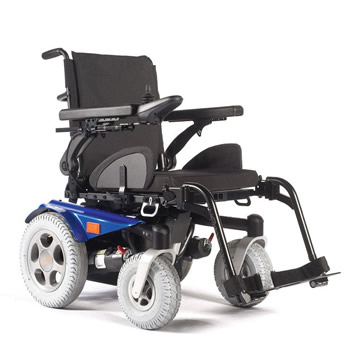
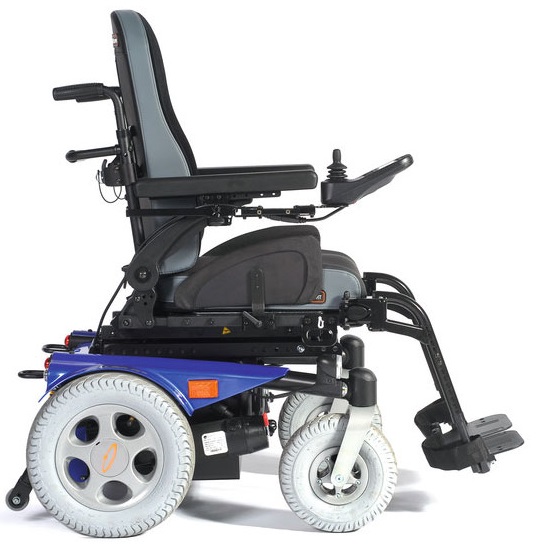
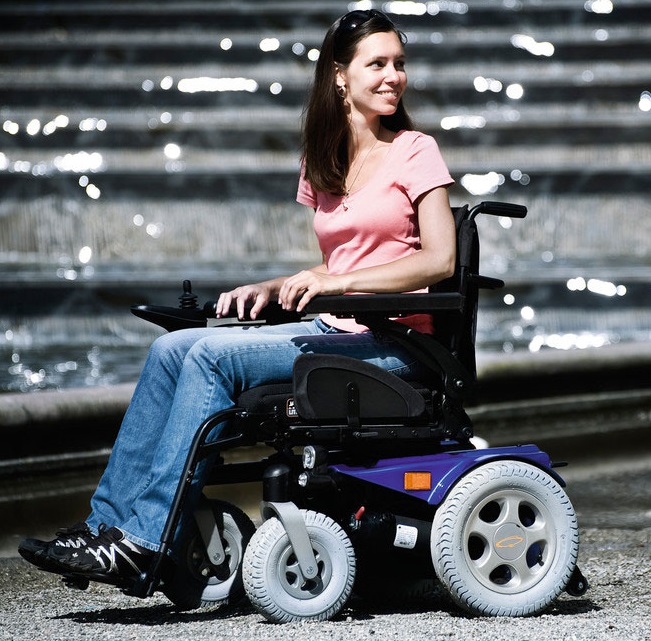
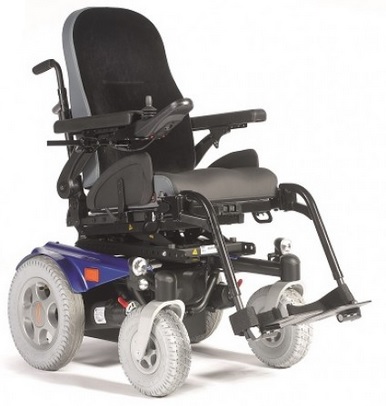
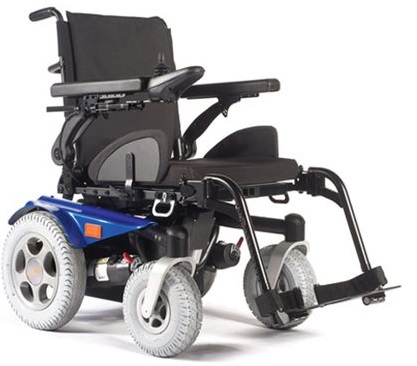
Class 3 rear-wheel drive powered wheelchair with optional powered height adjustment and tilt. Options: powered tilt module with centre of gravity adjustment; powered elevating leg rest; backrest can be optionally reclined with an actuator or a mechanical gas strut; trunk lateral supports; indicators; 60 or 70Ah batteries; choice of colour.
EPC
Motus Medical
Wheelfreedom
Mobility Smart
Manufacturer's Product Description
The manufacturer has not provided any further information about this product
Manufacturer's Contact Details
http://www.sunrisemedical.co.uk
Sunrise Medical Ltd
Thorns Road
Brierley Hill
West Midlands
DY52LD
UK
08456056688 Communicationpr:01384446798 enquiries@sunmed.co.ukKey Features
- adjustable drive wheel suspension
- flip-up armrests, adjustable in height, depth and angle
- detachable swing away leg rests
- multi adjustable seating adjustable in depth, width, height and angle
- LED lights
- four point tie-down system for transportation in a vehicle
Product Dimensions
| Power and Function | |
|---|---|
| Controls: user (U); dual (D); option (O) | D |
| Range | 30; 35km |
| Testing | |
| Crash tested to ISO 7176-19 | Yes |
Product Specification
No product specification has been specified.
Need More Help?
If you know that there is a certain product that will help you, feel free to browse through our online catalogue or use our search tool for specific product names. National retailers are listed against each product and you can click on their link to go directly to their website to order that product or contact the retailer for more information. Don't forget to tell them you found their information on our site.